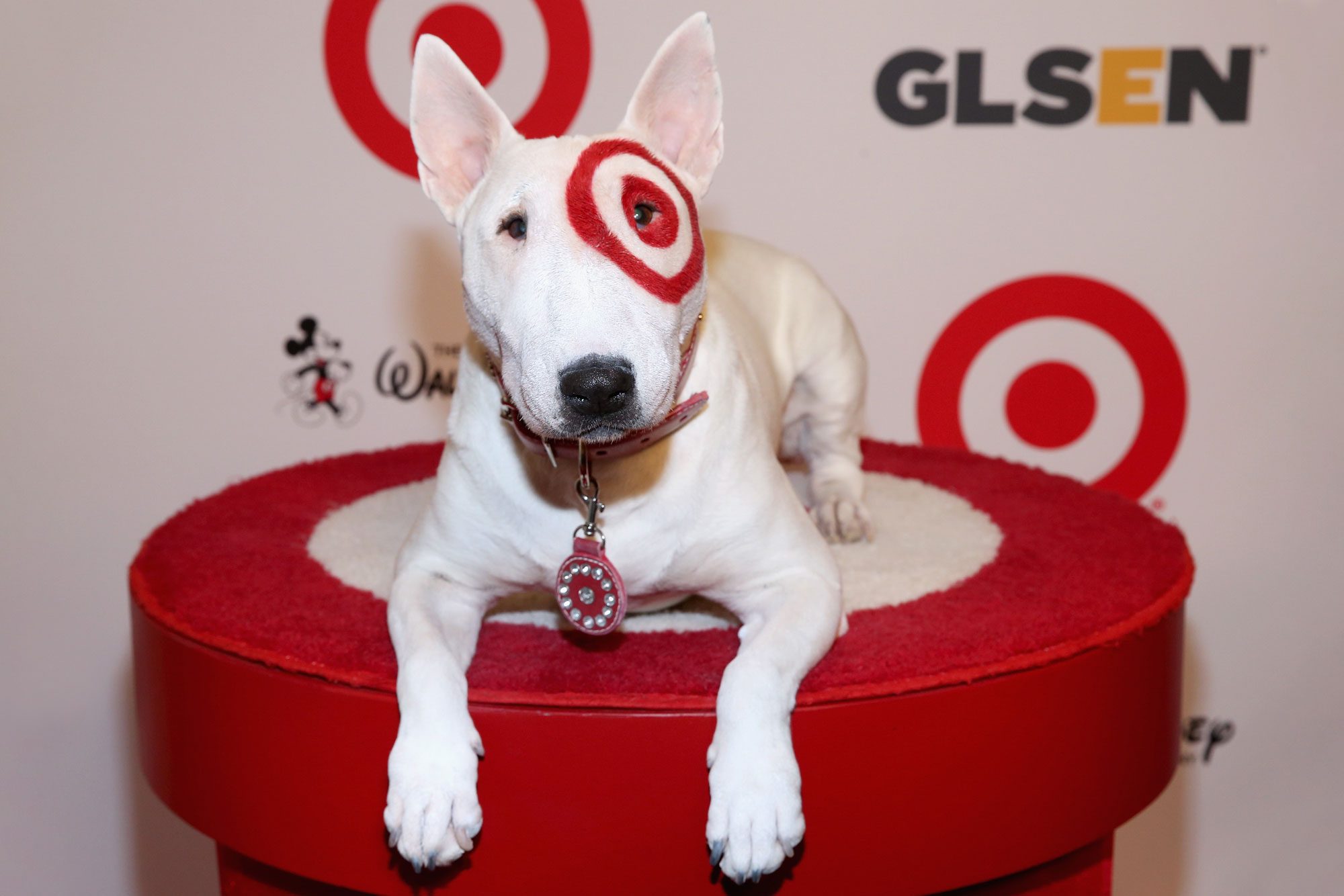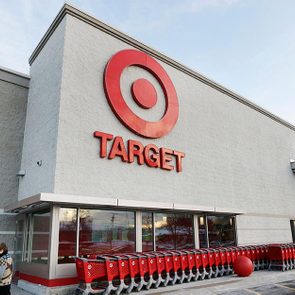The pup-arazzi aren't the only ones completely going mutts over the Target mascot

Who Is Bullseye? Everything You Need to Know About the Target Mascot

Target has it all. From food and household essentials to clothes and toys, there are seemingly a million things you should be buying at Target. It doesn’t hurt that the Target mascot is, hands down, the cutest (and furriest) around.
Yet despite how often they frequent Target, most people don’t know much about Bullseye, the lovable little white dog with the red rings around its eye. Well, get ready for an education. Ahead, we’re breaking down all of the fascinating facts about the Target mascot.
Get Reader’s Digest’s Read Up newsletter for more knowledge, shopping, humor, travel, tech and fun facts all week long.
Who is the Target mascot?
Named after the company’s signature red-and-white bullseye logo, Bullseye is the official mascot of Target and has starred in countless marketing campaigns and commercials over the years.
One fun fact? Bullseye is actually a “she.” Each version of Bullseye has been played by a female dog—there are currently six! But more on that later.
Is Bullseye a real dog, and what breed is she?
Yes, Bullseye is a real dog, and she’s a white bull terrier, affectionately known as a “bullie.” These pups are medium-sized with muscular bodies and a rounded head in the front. But despite their beefy look, bull terriers are extremely affectionate, loving and goofy. This is all illustrated in Bullseye herself, who has walked the red carpet, played with all kinds of celebrities and lounges in her own first-class airplane seat while traveling.
How long has Bullseye been the Target mascot?
Bullseye made her debut back in 1999 as part of an advertising campaign called Sign of the Times that featured a bull terrier set to a version of Petula Clark’s “A Sign of the Times.” The dog was a hit—and why wouldn’t she be? Guests were eager to see more of Bullseye, so the Target marketing team responded by plastering the dog all over print, digital and direct marketing later that year, even using her for one of the first-ever Target gift card designs. It wasn’t long before Bullseye joined the ranks of beloved celebrity animals in marketing, securing her place in pop culture and the hearts of shoppers countrywide.
Why does Target use a dog as its brand mascot?

In short: Because Bullseye boosts sales. She isn’t just a mascot; she’s a marketing powerhouse. As one of the most identifiable corporate mascots, this furry icon has become a symbol of Target’s values, making memorable appearances in several national campaigns.
The Target mascot expanded her resume in 2003 to include value ambassador when she was included in the campaign “See. Spot. Save.” This solidified Bullseye’s place in American pop culture, earning her invitations across the country to make appearances and strut the red carpet. Thankfully, there are currently six dogs who can step into the role of Bullseye if necessary.
Naturally, the next step was monetizing Bullseye herself—well, her likeness, at least. The first Bullseye “plush” hit the shelves in 1999 as a 15-inch stuffed animal but quickly shrunk into a more suitable (and budget-friendly) 7-inch toy. In 2001, Target began selling an array of styles and outfits. This all became exclusively available at Target in 2004. Today, you can even buy a 24-inch Bullseye stuffed animal.
Is the Target dog’s bullseye painted on—and just how safe is that?
For all the dog lovers out there who are concerned about the animal’s welfare, we’re right behind you. But you’ll be glad to hear that the signature target around Bullseye’s eye has been created with Humane Society–approved vegetable-based paint. It’s applied by a professional makeup artist, is nontoxic to the dog and easily wipes off.
Bullseye has brought the Target brand to life—there are hundreds of thousands of mentions of the #TargetDog on Instagram alone. And who knows what the beloved pup will be up to next?
Why trust us
At Reader’s Digest, we’re committed to producing high-quality content by writers with expertise and experience in their field in consultation with relevant, qualified experts. We rely on reputable primary sources, including government and professional organizations and academic institutions as well as our writers’ personal experiences where appropriate. We verify all facts and data, back them with credible sourcing and revisit them over time to ensure they remain accurate and up to date. Read more about our team, our contributors and our editorial policies.
Sources:























